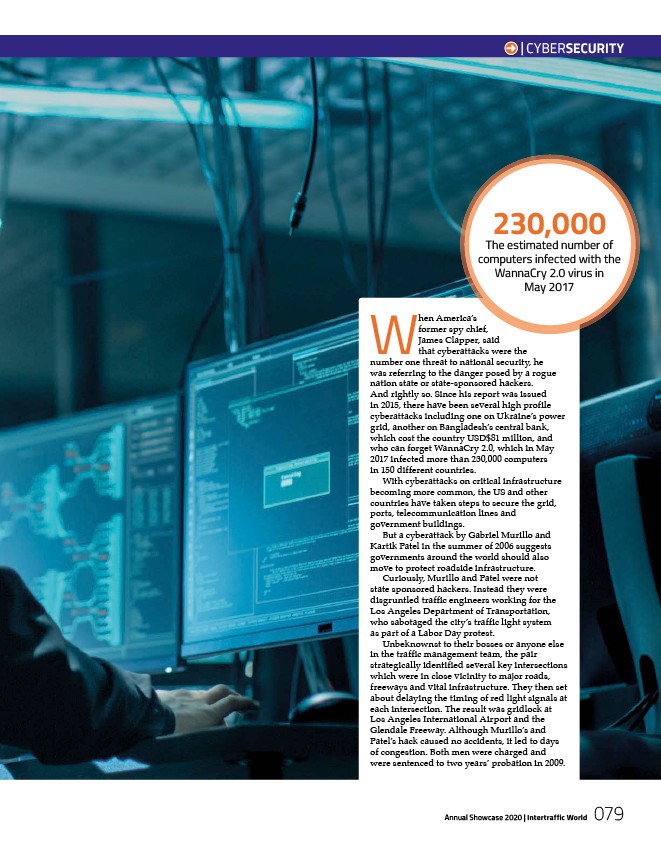
| CYBERSECURITY
230,000 The estimated number of
computers infected with the
WannaCry 2.0 virus in
May 2017
Annual Showcase 2020 | Intertraffic World
079
When America’s
former spy chief,
James Clapper, said
that cyberattacks were the
number one threat to national security, he
was referring to the danger posed by a rogue
nation state or state-sponsored hackers.
And rightly so. Since his report was issued
in 2015, there have been several high profile
cyberattacks including one on Ukraine’s power
grid, another on Bangladesh’s central bank,
which cost the country USD$81 million, and
who can forget WannaCry 2.0, which in May
2017 infected more than 230,000 computers
in 150 different countries.
With cyberattacks on critical infrastructure
becoming more common, the US and other
countries have taken steps to secure the grid,
ports, telecommunication lines and
government buildings.
But a cyberattack by Gabriel Murillo and
Kartik Patel in the summer of 2006 suggests
governments around the world should also
move to protect roadside infrastructure.
Curiously, Murillo and Patel were not
state sponsored hackers. Instead they were
disgruntled traffic engineers working for the
Los Angeles Department of Transportation,
who sabotaged the city’s traffic light system
as part of a Labor Day protest.
Unbeknownst to their bosses or anyone else
in the traffic management team, the pair
strategically identified several key intersections
which were in close vicinity to major roads,
freeways and vital infrastructure. They then set
about delaying the timing of red light signals at
each intersection. The result was gridlock at
Los Angeles International Airport and the
Glendale Freeway. Although Murillo’s and
Patel’s hack caused no accidents, it led to days
of congestion. Both men were charged and
were sentenced to two years’ probation in 2009.